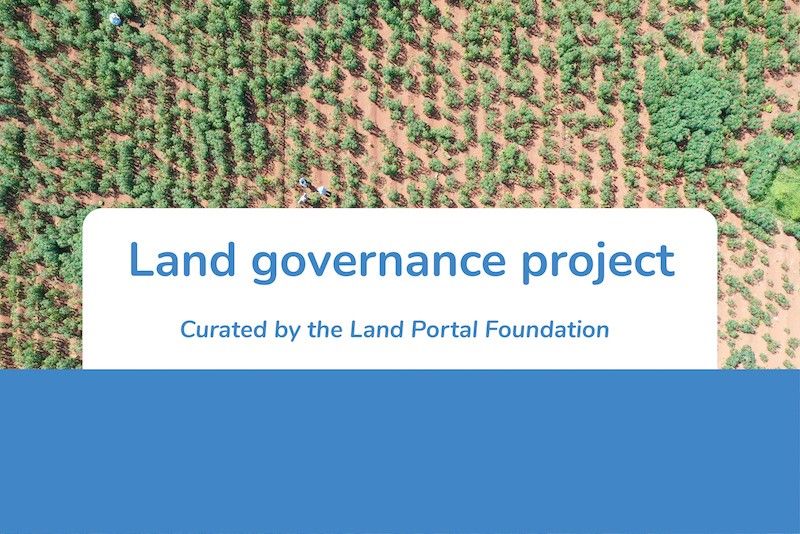Geographical focus
Related categories
Objectives
Sustainable management of the Miombo and Mopane productive landscapes of the Districts of Balaka, Ntcheu and Mangochi, contributing to national land degradation neutrality targets.
Other
Note: Disbursement data provided is cumulative and covers disbursement made by the project Agency.
Target Groups
The project will help deliver the following global socio-economic benefits: Global Socio-economic Benefits Objectives and Priorities to be addressed through the IP GEF 7 Core Indicator Target Expected contribution of the Malawi Child Project of the SFM-DSL IP Sustainable management of forest landscape and dryland production systems – integrating the LDN targets into planning processes, focusing mainly on improved land use and management for crop and livestock production. 109,009,473 direct beneficiaries (disaggregated by gender) benefit of GEF investments. 150,000 members of rural communities (disaggregated by gender) directly benefitting of SLM/SFM interventions. The Global socio-economic benefits are based following on the following considerations: Sustainable Forest Management: It is estimated that during the project lifetime approx. 10,000 members of forest users, women associations and producer organizations will benefit of the FMLG and procurement investments in the target landscapes of the three districts, resulting in 8,454 hectares of restored forest blocks and village forest areas with improved co-managed systems. The forest users that throughout the process have acquired a greater organizational capacity and an improvement in the high-quality production of the project's target commodities (e.g. bee products, mushrooms, baobab, fuelwood & charcoal, and other identified priority NTFP during project implementation), will be supported to improve their business capacity and market access for diversified green value chain (GVC) commodities. The project will target women and men in equal proportion of 50%. · Sustainable intensification of agroforestry production systems: It is estimated that during the project lifetime approx… 34,000 women and men smallholder farmers, will benefit of the FFS and procurement investments in the target landscapes of the three districts, and project investments will allow 7,845 hectares of sustainably managed agroforestry production systems. The smallholder farmers that throughout the process have acquired a greater organizational capacity under producer organizations and an improvement in the high-quality production of the project's target commodities (e.g. pigeon pea, sorghum, moringa), will be supported to improve their business capacity and market access for diversified green value chain (GVC) commodities. The project will target women and men in equal proportion of 50%. · Increased skills and knowhow on FLR/SLM/SFM/GVC: Approximately 150,000 community members (33,350 households) will have acquired good knowledge and skills on FLR/SLM/SFM/GVC. 520 practitioners from different stakeholder groups (e.g. AEDOs, Forest Extension Officers, FFS trainers, NASFAM members, researchers, lead farmers, private companies, CBOs and NGOs) will be qualified as master trainers on FFS therefore increasing their employment opportunities during project implementation and beyond. · Micro, small and medium enterprise development around green value chain (GVC) commodities: The project will support approximately 10,000 local producers to become members of economically viable micro-small-medium enterprises (producer organizations and cooperatives) with social and environmental corporate responsibility, through training, technical and financial support for the adoption of improved technologies that allow production to comply with market requirements and national standards for product diversification. Local businesses around green value chain commodities will include: (i) community nurseries for the production and marketing of high quality plant material (seeds, seedlings and cuttings) and the provision of services to customers on the use of plant material in FLR/SLM/SFM implementation; (ii) production and marketing of a diverse set of high quality products of moringa, beekeeping, baobab, pigeon pea, sorghum, and bioenergy, among others. The project will target a minimum of 1/3 of women among beneficiaries. · Adaptive capacity of smallholder farmers and forest users: The project will enhance the adaptive capacity of women and men smallholder farmers and forest users, addressing the gender-specific adaptation needs. The project will enhance farmer’s resilience and adaptation capacity in the following way: (i) reduce the impact of climate shocks on smallholder farmers through the promotion of management practices that help compensate the effect of drought events through higher soil water availability (conservation agriculture and agroforestry; less water demanding crop varieties); (ii) diversify livelihoods (food security and income diversification) through sustainable intensification of agroforestry production through which farmers diversify their production from a set of crops (e.g. mix production of pigeon pea + sorghum + moringa, with additional vegetable production on home gardens) and reduce the risk of total loss of production due to a climatic event; (iii) increase the capacity of producer organizations to preserve and process their products reducing their perishability increasing their capacity to negotiate in the market over a longer period of time without depending on the seasonality of the raw product; (iv) increase the capacity to produce high quality products with greater potential to be marketed and increase revenue that allow smallholder farmers to cover needs in times of shocks. Target 1.B in MDG 1 (“Eradicate extreme poverty and hunger”) highlights the central role of employment and decent work in achieving food security and poverty reduction, therefore allowing women and men in rural communities to have access to the knowledge and resources necessary to produce sustainably and thereby contributing to the (SDG) target 15.3 on LDN. The project formulation has followed the Guidance on How to Address Decent Rural Employment Concerns in FAO Country Activities to make sure that decent rural employment is promoted in the project outcomes and outputs: Table. The Four Pillars of Decent Rural Employment (DRE) in the GEF Child Project in Malawi Pillar 1: Employment creation and enterprise development · Component 1will address explicitly policies, regulations and bylaws supporting DRE in the implementation of FLR/SLM/ SFM and to meet the certification standards of the Malawi Bureau of Standards in the GVC development. · Outcome 2.3 will build the capacity of women and men small-holder producers in accessing markets and modern green value chains. · The FFS and FMLG under Outcome 2.2 will provide vocation and education training programs for rural women and men on technical and business skills. · The training-of-trainers (ToT) under FFS and FMLG will increase the professionalization of members of youth clubs and other groups of practitioners on FLR/SLM/SFM related-jobs. · Component 3 will develop national and sub-national capacities to collect and analyze age and sex disaggregated data on rural labour under LDN interventions. Pillar 2: Social protection · FFS and FMLG under Outcome 2.2 will train practitioners on occupational safety and health measures for the rural workforce applying SLM/SFM/GVC technologies. · Producer organizations, enterprises and buyer companies supported by business development, incubation and accelerator programs under Component 2 will enhance their social corporate responsibility. · Procurement investments in each district will have a funding window of social support for emergency or distress situations, targeting community needs beyond the SLM/SFM priorities. The provision of this support indirectly delivers SLM/SFM because it helps remove social barriers that may prevent community members to invest in SLM/SFM. The social support procurement window will have a total of USD 50,000 per ILMP (USD 150,000 for the whole project). Pillar 3: Standards and rights at work · Community bylaw formulation, fair access to training, extension and investments on SLM/SFM technologies and inputs will help reduce gender and age-based discrimination in the target landscapes. · The project will ensure compliance with the National Labour Legislation for the rural areas. the Project will use the SNAP[1] community-based approach to monitor child labour, through the District Child Labour & Community Child Labour Committees and active involvement of local leaders, and representatives from church, government, NGOs, employers’ and workers’ organizations. Pillar 4: Governance and social dialogue · Component 1 will ensure representation of the rural poor in policy dialogue through awareness raising, training and bylaw formulation on gender-inclusive land tenure and natural resource governance issues. · The project will ensure in Component 2 fair, and effective participation of the rural poor in the planning, implementation and monitoring of the Integrated landscape Management Plans, and Village-level Action Plans. · Component 2 will put especial focus on capacity enhancement activities for women and youth groups to empower them in SLM/SFM/GVC. · The Child Project in Malawi, with the support of the GCP SFM-DSL IP will create synergies and south-south collaboration among practitioners from the six Miombo & Mopane countries. [1] National Action Plan to combat child labor in Malawi.




